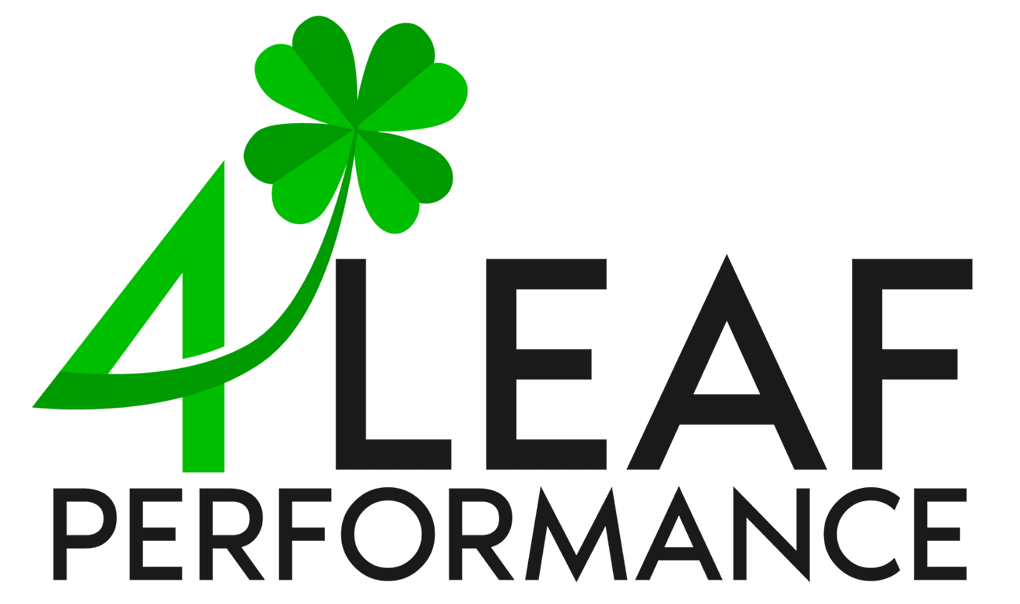Setting practical business goals is at the heart of every successful business strategy. Business goal setting involves creating clear, actionable standards that guide teams and organizations toward specific outcomes. These goals serve as a roadmap for year planning, helping businesses track progress, measure success, and adapt to challenges.
Whether you’re planning for the year ahead or mapping out your 2025 goals, a structured approach to business goal setting can help you stay focused, aligned, and prepared for growth. However, goal setting doesn’t stop with writing down objectives. You need to make sure those goals are achievable and to make it easier to create these achievable goals; it’s important to understand the science behind them.
Why Goal Setting Works
Business goal setting is more than just deciding what you want to achieve. It’s a process rooted in psychology and neuroscience that helps turn intentions into results. Setting clear and measurable goals gives your business a defined direction, ensuring every team member knows what they’re working toward.
Research shows that setting specific, challenging goals improves performance. According to Locke and Latham’s Goal-Setting Theory, well-defined goals create a sense of purpose and motivation. This happens because specific goals clarify the standards for success. At the same time, challenging goals push individuals and teams to reach higher levels of achievement. For example, a vague goal like “increase sales” is far less effective than a specific one like “increase sales by 20% in Q1 of 2025.”
From a neuroscience perspective, goal setting activates the brain’s reward system. When you work toward a goal and make progress, your brain releases dopamine, a chemical that reinforces motivation and helps sustain focus. This makes achieving smaller milestones along the way just as satisfying as reaching the final objective.
Another science-backed strategy for success is breaking larger goals into smaller, manageable steps. Smaller goals provide a clear path forward, reducing overwhelm and creating opportunities for frequent wins. For instance, instead of aiming to “streamline operations in 2025,” you can break it into actionable steps like “automate inventory tracking by March” or “implement a new CRM system by June.”
Finally, goal setting helps align individual and team efforts with broader business objectives. By defining clear priorities, businesses can avoid distractions and ensure everyone works toward a common purpose. This alignment is especially critical for year planning, as it allows leaders to evaluate progress and adjust strategies throughout the year.
Intrinsic vs. Extrinsic Motivation: Finding the Balance
Motivation is the driving force behind achieving business goals, and understanding its two main types—intrinsic and extrinsic—can help you create a more effective approach to setting business goals. Intrinsic motivation comes from within and is fueled by personal satisfaction, purpose, or the joy of accomplishing meaningful tasks. Extrinsic motivation, on the other hand, is driven by external rewards like bonuses, recognition, or promotions. Finding the right balance between these two types of motivation is essential for year planning and achieving your 2025 goals.
Intrinsic Motivation: The Long-Term Driver
Intrinsic motivation focuses on purpose and fulfillment. For example, a team might be intrinsically motivated to develop a product that solves a real-world problem because they find the work meaningful. This type of motivation tends to result in sustained effort and deeper engagement, as individuals and teams are driven by values rather than external incentives.
In business goal setting, intrinsic motivation is especially valuable when aligning goals with a company’s mission or vision. Setting goals that resonate with your team’s purpose—for example, “improve customer satisfaction by creating more personalized experiences”—encourages them to stay committed over the long term.
Extrinsic Motivation: Boosting Short-Term Performance
Extrinsic motivation, while external, plays a critical role in driving immediate action. Goals tied to tangible rewards, such as “achieve 10% revenue growth this quarter to earn a team bonus,” provide a clear incentive for hitting targets. Recognition programs, milestone celebrations, and other rewards can maintain energy and focus, especially when tackling short-term or challenging objectives.
However, relying solely on extrinsic motivators can sometimes lead to burnout or diminished performance once the reward is achieved. That’s why it’s essential to use external incentives strategically and pair them with intrinsic motivators to create a sustainable system.
Striking the Right Balance
Balancing intrinsic and extrinsic motivation involves crafting business goals that are both meaningful and rewarding. For instance, when planning for 2025 goals, consider combining purpose-driven objectives like “reduce the environmental impact of operations by 15%” with performance-based incentives, such as recognition for completing specific milestones. Regularly reviewing progress and celebrating successes ensures that motivation remains high, blending purpose and rewards seamlessly.

Frameworks for Effective Business Goal Setting
Effective business goal setting requires more than ambition—it demands structure. Frameworks like SMART goals, OKRs, and PACT provide proven methods for creating clear and actionable objectives. These frameworks help businesses align their goals with broader strategies, track progress, and adapt as needed, making them invaluable tools for year planning and achieving your 2025 goals.
SMART Goals: A Practical Starting Point
The SMART framework ensures goals are Specific, Measurable, Achievable, Relevant, and Time-bound. It is one of the most widely used approaches for business goal setting because it emphasizes clarity and feasibility. For example, instead of setting a vague goal like “improve sales,” a SMART goal would be: “Increase sales by 15% in Q1 of 2025 through targeted marketing campaigns.”
- Specific: Define exactly what you want to achieve.
- Measurable: Include criteria to track progress and success.
- Achievable: Ensure the goal is realistic, given current resources.
- Relevant: Align the goal with broader business objectives.
- Time-bound: Set a clear deadline to create urgency and focus.
OKRs: Driving Alignment and Results
Objectives and Key Results (OKRs) are another popular framework for aligning team efforts with organizational priorities. OKRs are split into two parts:
- Objectives: Broad, inspirational goals (e.g., “Expand market share in the Southeast region”).
- Key Results: Specific, measurable outcomes that define success (e.g., “Launch three new products in the region by Q3 2025” or “Increase customer acquisition by 20%”).
OKRs promote transparency and alignment, making them ideal for cross-functional teams working toward shared business goals. They also encourage regular check-ins, ensuring progress stays on track.
PACT Goals: A Flexible Alternative
PACT (Purposeful, Actionable, Continuous, Trackable) goals offer a flexible approach to goal setting for businesses operating in dynamic environments. Unlike SMART or OKRs, PACT emphasizes continuous improvement and adaptability:
- Purposeful: Focus on meaningful goals that align with company values.
- Actionable: Break objectives into practical, immediate steps.
- Continuous: Encourage ongoing effort rather than fixed deadlines.
- Trackable: Monitor progress through iterative reviews.
PACT is especially useful for innovative or agile teams that must pivot quickly in response to market changes.
Choosing the Right Framework
Each framework has strengths; the best choice depends on your business needs. For instance, SMART goals are great for individual accountability, OKRs are ideal for organizational alignment, and PACT works well for teams in fast-changing industries. Incorporating these frameworks into your business goal setting ensures clarity, focus, and adaptability, whether tackling short-term priorities or planning for 2025 goals.
Using Reflection and Flexibility in Achieving Your Goals
Planning is only the first step in business goal setting. It’s essential to reflect on progress regularly and remain flexible enough to adapt when circumstances change to achieve meaningful results. Reflection and flexibility allow you to evaluate what’s working, identify potential obstacles, and adjust your approach to align with broader business goals.
The Importance of Regular Reflection
Reflection provides the opportunity to review progress against established standards. By assessing how well goals are being met, you can pinpoint areas for improvement and celebrate achievements. For example, during year planning or tracking 2025 goals, you might reflect on metrics like revenue growth, team performance, or customer satisfaction to ensure your business is on track.
Regular weekly, monthly, or quarterly check-ins help maintain focus and accountability. These reviews also encourage teams to stay engaged as they clarify how their contributions align with overall business objectives. By consistently reflecting on progress, you can avoid small issues growing into larger problems.
Adapting Goals for Changing Circumstances
Business environments are rarely static. Whether it’s shifting market trends, unexpected challenges, or new opportunities, flexibility in business goal setting is key to staying relevant. Adapting doesn’t mean abandoning your goals; it means rethinking strategies or timelines to keep moving forward.
For instance, if an external factor delays achieving a quarterly sales target, you could reassess the timeline or explore alternative approaches, such as targeting a new audience or refining your marketing strategy. Flexibility ensures that unforeseen changes don’t derail your business goals but instead lead to creative problem-solving.
Using Iterative Goal Setting
Adopting an iterative goal-setting approach can help integrate reflection and flexibility into your year planning. Instead of setting static goals at the start of the year, consider revisiting them periodically. This method allows you to adjust objectives based on new insights or priorities, ensuring your goals remain relevant throughout the year.
For example, during quarterly reviews of 2025 goals, you could revise key performance indicators (KPIs) or pivot toward emerging business opportunities. Iterative goal setting supports adaptability and keeps your goals aligned with your business’s evolving needs.
Reflection and flexibility ensure that business goal setting remains dynamic, helping you achieve results without losing sight of your broader objectives. You can maintain focus, adapt to challenges, and drive sustained success by embedding these practices into your routine.
Common Mistakes in Business Goal Setting (and How to Avoid Them)
Effective business goal setting requires thoughtful planning and execution. However, even with the best intentions, common mistakes can undermine your efforts and prevent your business goals from being achieved. Identifying and addressing these pitfalls proactively can help you stay on track during year planning and beyond.
Setting Vague or Unrealistic Goals
One of the most common mistakes is setting goals that are either too broad or overly ambitious. A goal like “increase profits significantly” is too vague to provide clear direction, while an unrealistic target like “double revenue in one month” may set your team up for frustration.
How to Avoid It: Use frameworks like SMART goals. For example, instead of “increase profits,” aim to “increase profits by 10% by the end of Q2 2025 through improved cost management and targeted marketing campaigns.”
Overloading Teams with Too Many Goals
Trying to tackle too many objectives at once can dilute focus and overwhelm your team. This often leads to reduced productivity and missed deadlines.
How to Avoid It: Prioritize your business’s most critical goals and ensure they align with your overall strategy. For instance, during your 2025 year planning, focus on three to five core business goals rather than spreading resources thin across multiple objectives.
Failing to Align Goals with Resources
Setting goals without considering the available resources—time, budget, or skills—can lead to unachievable expectations and frustration. For example, planning to expand operations without enough team capacity may result in missed targets.
How to Avoid It: Before finalizing your goals, assess whether you have the necessary resources. If gaps exist, adjust your goals or allocate additional support, such as hiring new team members or investing in training programs.
Neglecting Regular Progress Reviews
Without regular check-ins, it’s easy to lose track of progress or overlook potential challenges. This can result in falling behind without realizing it until it’s too late to course-correct.
How to Avoid It: Schedule regular progress reviews—weekly, monthly, or quarterly—to assess how well goals are being met. Use these sessions to identify roadblocks, celebrate milestones, and refine your approach.
Ignoring Team Input
Goals set without consulting your team may lack buy-in or fail to account for on-the-ground insights. This can lead to disengagement and missed opportunities for collaboration.
How to Avoid It: Involve your team in goal-setting to ensure goals are realistic, relevant, and aligned with their day-to-day responsibilities. This fosters a sense of ownership and boosts motivation.
Overlooking Long-Term Impact
Focusing solely on short-term wins can sometimes lead to decisions that negatively impact your business in the long run. For example, aggressively cutting costs to meet immediate goals might harm quality or team morale.
How to Avoid It: Balance short-term objectives with long-term strategy. Ensure that every goal contributes to sustainable growth and aligns with your vision for 2025 and beyond.

How to Make Business Goal Setting a Sustainable Practice
Setting business goals is essential, but ensuring they remain effective over time requires sustainability. Sustainable business goal setting integrates ongoing practices that keep goals relevant, achievable, and aligned with your long-term objectives. By embedding these practices into your business culture, you can make year planning and achieving your 2025 goals seamless.
Embed Goal Setting Into Your Company Culture
For goal setting to become sustainable, it needs to be part of your company’s daily operations. Encourage teams to view goal setting as a natural part of planning, execution, and reflection. This approach helps align individual efforts with overarching business objectives.
Actionable Tip: Hold regular goal-setting workshops where teams can collaboratively develop objectives supporting company priorities. For example, during your 2025 year planning, involve all departments to ensure shared ownership of key goals.
Leverage Goal-Setting Tools and Technology
Using digital tools or software can streamline tracking and managing business goals. Platforms like project management tools or performance dashboards make monitoring progress, identifying bottlenecks, and adjusting strategies in real time more manageable.
Actionable Tip: Implement a system that allows for transparent goal tracking across teams, ensuring everyone has visibility into progress and accountability.
Create Regular Review Cycles
Sustainability requires continuous evaluation. Schedule regular review cycles—monthly, quarterly, or biannually—so you can assess progress, celebrate achievements, and make adjustments. Reflection ensures your goals remain aligned with current business needs and market conditions.
Actionable Tip: During reviews, ask questions like:
- Are these goals still relevant to our business priorities?
- What progress have we made, and what challenges remain?
- How can we adapt our strategies to improve outcomes?
Celebrate Wins to Maintain Momentum
Recognizing achievements keeps teams motivated and reinforces positive behaviors. Celebrations don’t have to be elaborate; even small acknowledgments can go a long way in maintaining engagement and focus.
Actionable Tip: When you achieve a milestone, celebrate with the team by sharing progress during meetings or providing tangible rewards for exceptional contributions.
Balance Ambition With Realism
While ambitious goals can drive innovation, overly aggressive objectives can lead to burnout or missed standards. Sustainable goal setting balances challenge with achievability, ensuring teams feel motivated rather than overwhelmed.
Actionable Tip: Encourage teams to break down ambitious business goals into manageable phases. For example, if one of your 2025 goals is to expand into a new market, set smaller milestones like researching competitors, building local partnerships, and launching a pilot project.
Align Goal Setting With Long-Term Vision
Ensure every goal supports your company’s vision. Whether planning for the next quarter or the following year, your goals should contribute to long-term success.
Actionable Tip: Review your company’s mission and values during year planning to ensure your 2025 goals align with the big picture. This alignment keeps your efforts focused and prevents distractions from short-term gains.

Achieve Success Through Strategic Business Goal Setting
Business goal setting is a strategic process that drives growth, aligns efforts, and ensures long-term success. By understanding the science behind effective goal setting, leveraging proven frameworks, and embedding reflective and flexible practices into your approach, you can set clear, achievable business goals that propel your organization forward. Whether focused on year planning or preparing for your 2025 goals, a structured, intentional approach will make all the difference.
If you’re ready to elevate your business goal setting and ensure your team is aligned and equipped for success, 4 Leaf Performance is here to help. Our executive coaching services provide expert guidance to help you refine your goals, develop sustainable strategies, and achieve measurable results.
Take the next step toward achieving your 2025 goals—contact 4 Leaf Performance today and start building a future of clarity, alignment, and success.



